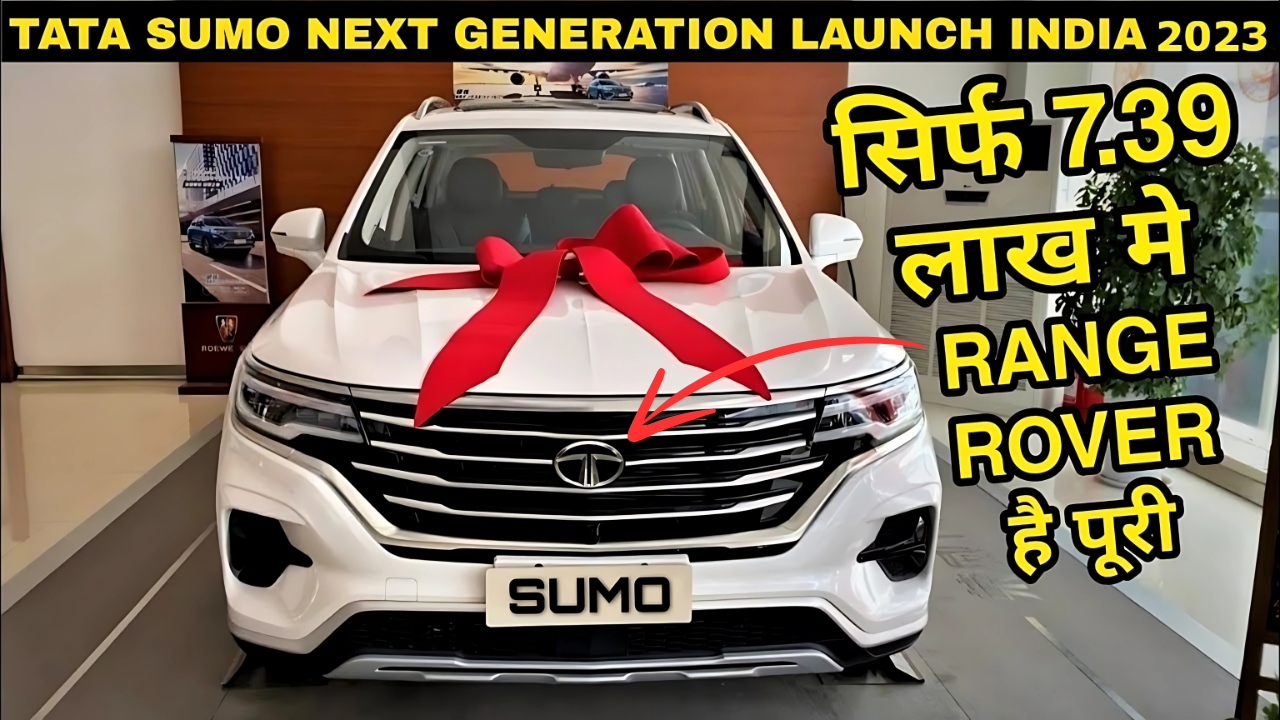In the early 1990s, when the Indian automotive landscape was dominated by compact cars and utility vehicles derived from the Willys Jeep, Tata Motors introduced a game-changer that would redefine the concept of rugged, spacious transportation for the masses.
The Tata Sumo, launched in 1994, quickly became a symbol of durability and versatility on Indian roads, carving out a unique niche in the country’s automotive history.
The Birth of a Legend
The story of the Tata Sumo is as fascinating as the vehicle itself. Contrary to popular belief, the name “Sumo” wasn’t inspired by Japanese wrestling, but rather by a man who played a pivotal role in Tata Motors’ success.
Sumant Moolgaokar, the then Managing Director of Tata Motors, was the inspiration behind the name.
The first two letters of his first and last name were combined to create “Sumo,” a fitting tribute to a man whose vision helped shape the company’s future.
Moolgaokar was known for his unique approach to research and development.
Legend has it that he would often skip executive lunches to dine at roadside dhabas with truck drivers, gathering invaluable insights about the challenges faced by users of Tata vehicles.
This grassroots approach to understanding customer needs played a crucial role in the development of the Sumo and other Tata vehicles.
A Vehicle Built for India
The Tata Sumo was designed with the Indian market in mind.
Its robust body-on-frame construction, derived from the Tata X2 platform used in the Telcoline pickup, made it ideal for India’s diverse and often challenging road conditions.
The vehicle’s spacious interior could comfortably seat ten passengers, making it popular for both personal and commercial use.
Initially launched with a 2.0-liter diesel engine licensed from Peugeot, the Sumo offered a perfect balance of power and fuel efficiency.
Its rear-wheel-drive configuration, with an option for four-wheel drive in some variants, ensured that it could handle a variety of terrains with ease.
Rapid Success and Evolution
The Sumo’s popularity was immediate and overwhelming. Within just three years of its launch, Tata Motors had sold over 100,000 units, a testament to the vehicle’s appeal and the growing demand for robust, multi-utility vehicles in India.
Over the years, the Sumo underwent several iterations to keep up with changing market demands and regulations:
- Tata Sumo Spacio (2000-2011): Introduced a new 3.0-liter direct injection diesel engine, offering improved performance and fuel efficiency.
- Tata Sumo Victa (2004-2011): Featured updated styling and interior amenities, catering to a more urban customer base.
- Tata Sumo Gold (2012-2019): The final evolution of the Sumo, incorporating modern features while retaining its core strengths.
Each iteration built upon the Sumo’s reputation for reliability and versatility, adapting to the changing needs of Indian consumers while staying true to its rugged roots.
Impact on Indian Mobility
The Tata Sumo’s influence extended far beyond personal transportation. It became a popular choice for:
- Rural connectivity: Its ability to navigate rough terrain made it ideal for connecting remote villages.
- Law enforcement: Many police departments adopted the Sumo for patrol and rapid response duties.
- Tourism: The spacious interior and robust construction made it perfect for tour operators in various parts of India.
- Ambulance services: Modified Sumos served as ambulances in areas where larger vehicles struggled to reach.
The Sumo’s versatility and affordability played a significant role in enhancing mobility across various sectors of Indian society, contributing to economic growth and improved connectivity.
Legacy and Discontinuation
After a remarkable 25-year run, the Tata Sumo was discontinued in 2019. The decision was driven by changing emission norms and evolving consumer preferences.
However, the impact of the Sumo on Indian automotive history is indelible. It paved the way for future Tata SUVs like the Safari and Harrier, and its spirit lives on in these modern offerings.
The Sumo’s legacy is not just about a successful product; it’s a testament to Tata Motors’ ability to understand and cater to the unique needs of the Indian market.
The vehicle’s development, guided by Sumant Moolgaokar’s grassroots approach to research, set a precedent for customer-centric innovation at Tata Motors.
New TATA Sumo : More Than Just a Vehicle
The Tata Sumo was more than just a utility vehicle; it was a phenomenon that touched millions of lives across India.
From bustling city streets to remote village roads, the Sumo was a constant presence, earning a reputation for reliability that few vehicles could match.
As we look back on the Sumo’s journey, it stands as a symbol of Indian ingenuity and adaptability.
It represents a time when the Indian automotive industry was coming into its own, creating products tailored to local needs rather than adapting foreign designs.
The story of the Tata Sumo is, in many ways, the story of India’s automotive awakening. It’s a narrative of vision, perseverance, and the ability to create a product that resonates deeply with its target audience.
As newer, more advanced vehicles take to Indian roads, the Tata Sumo’s place in history remains secure – a true icon that helped shape the nation’s mobility landscape.
